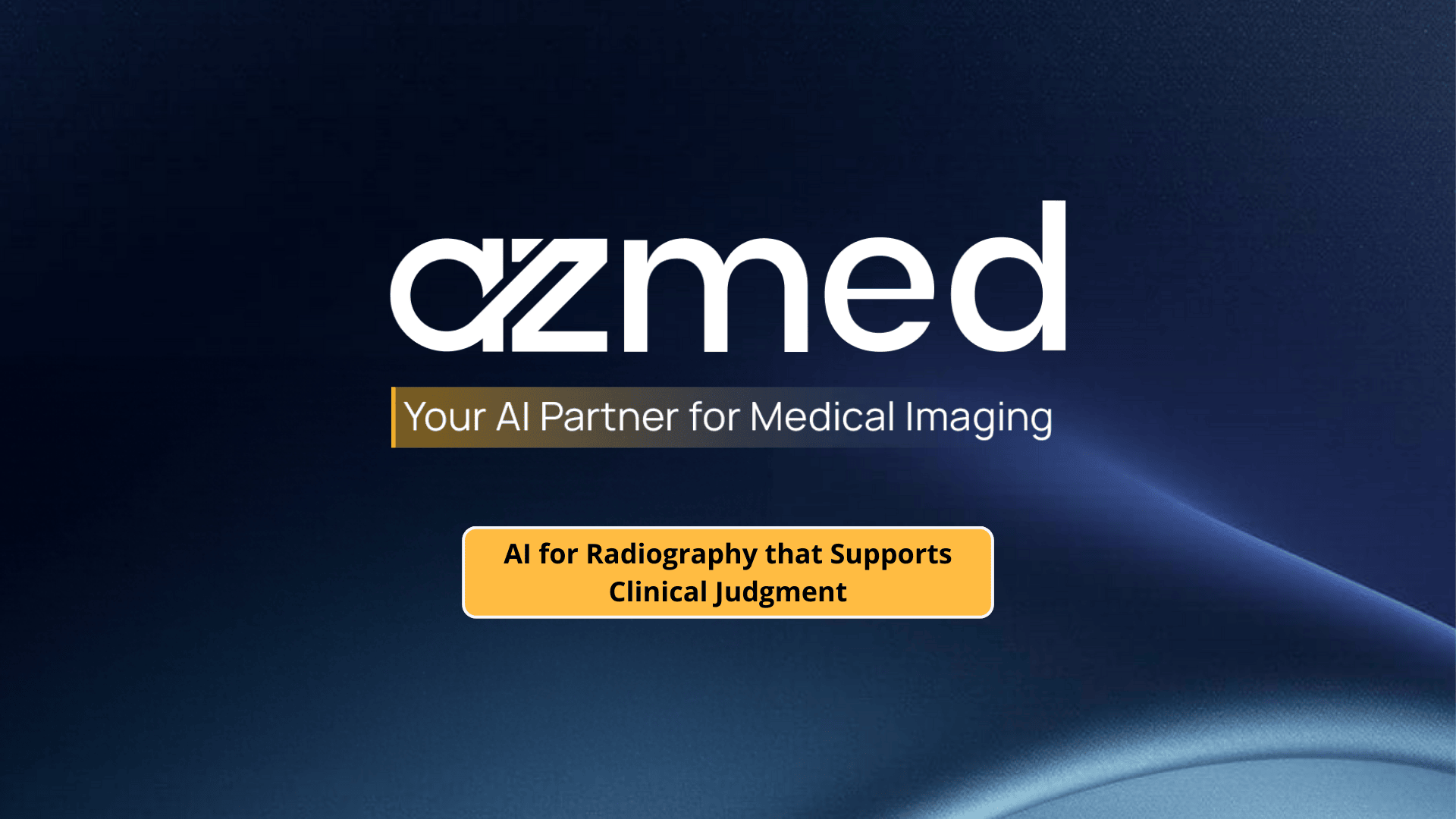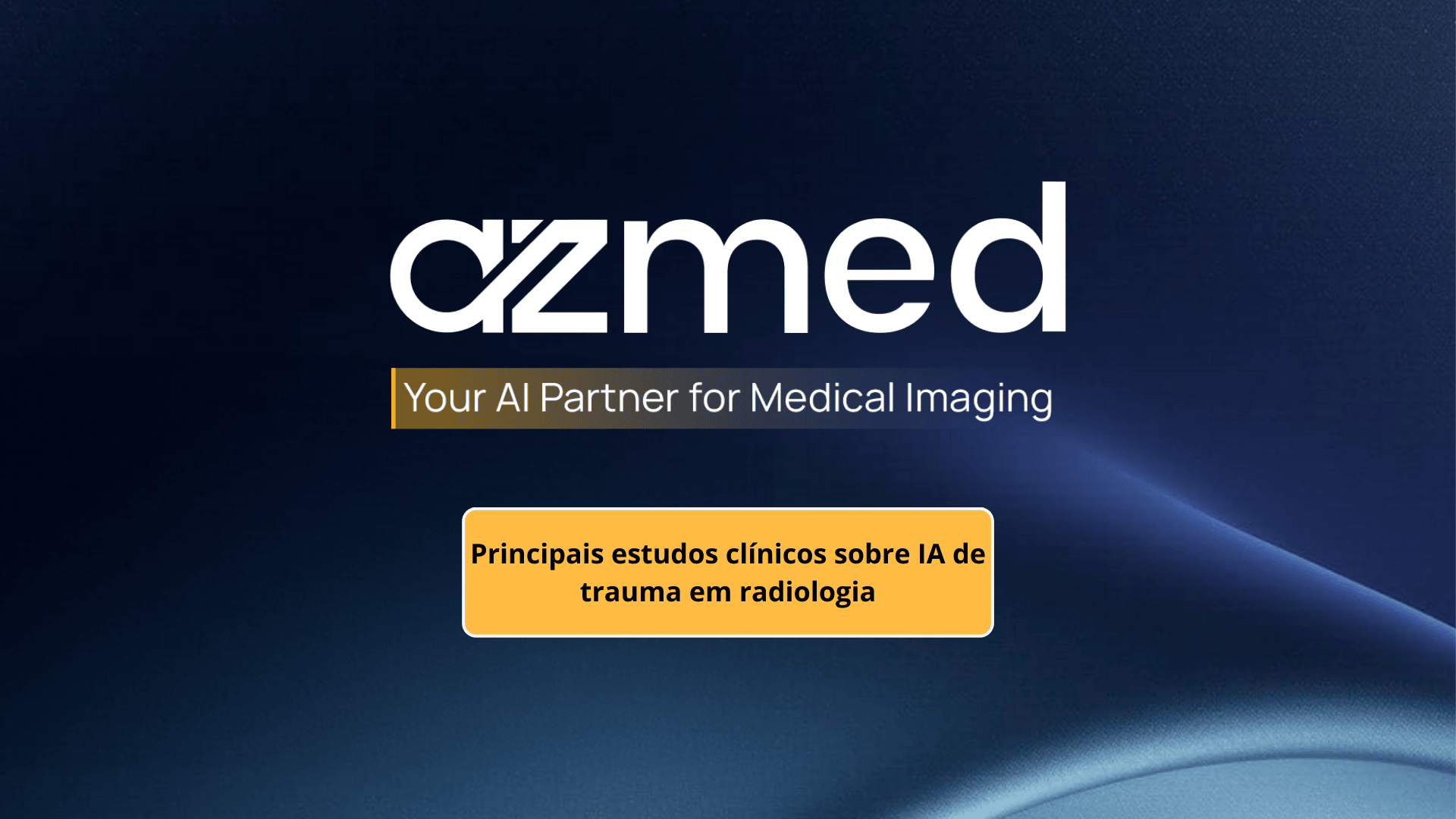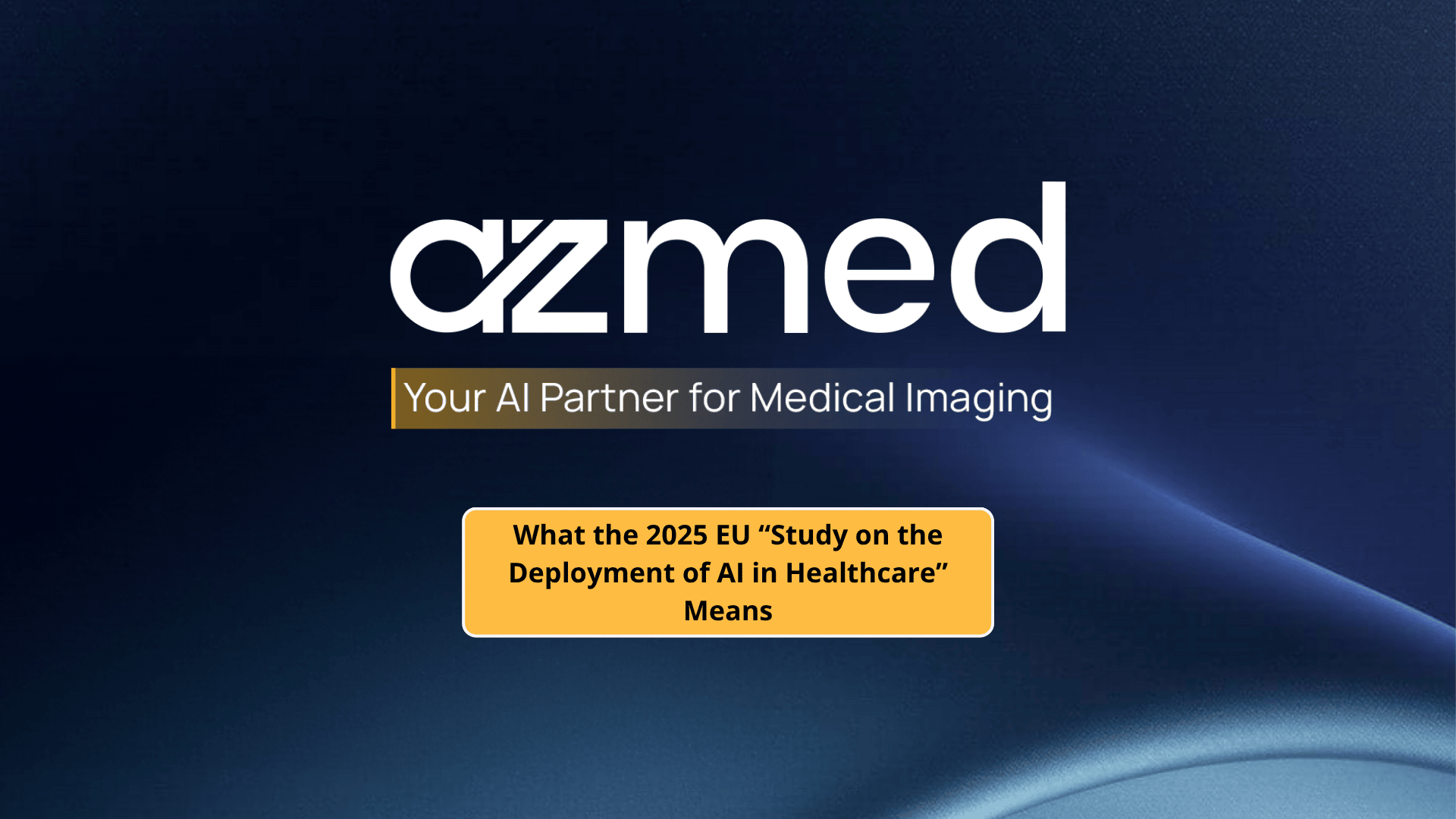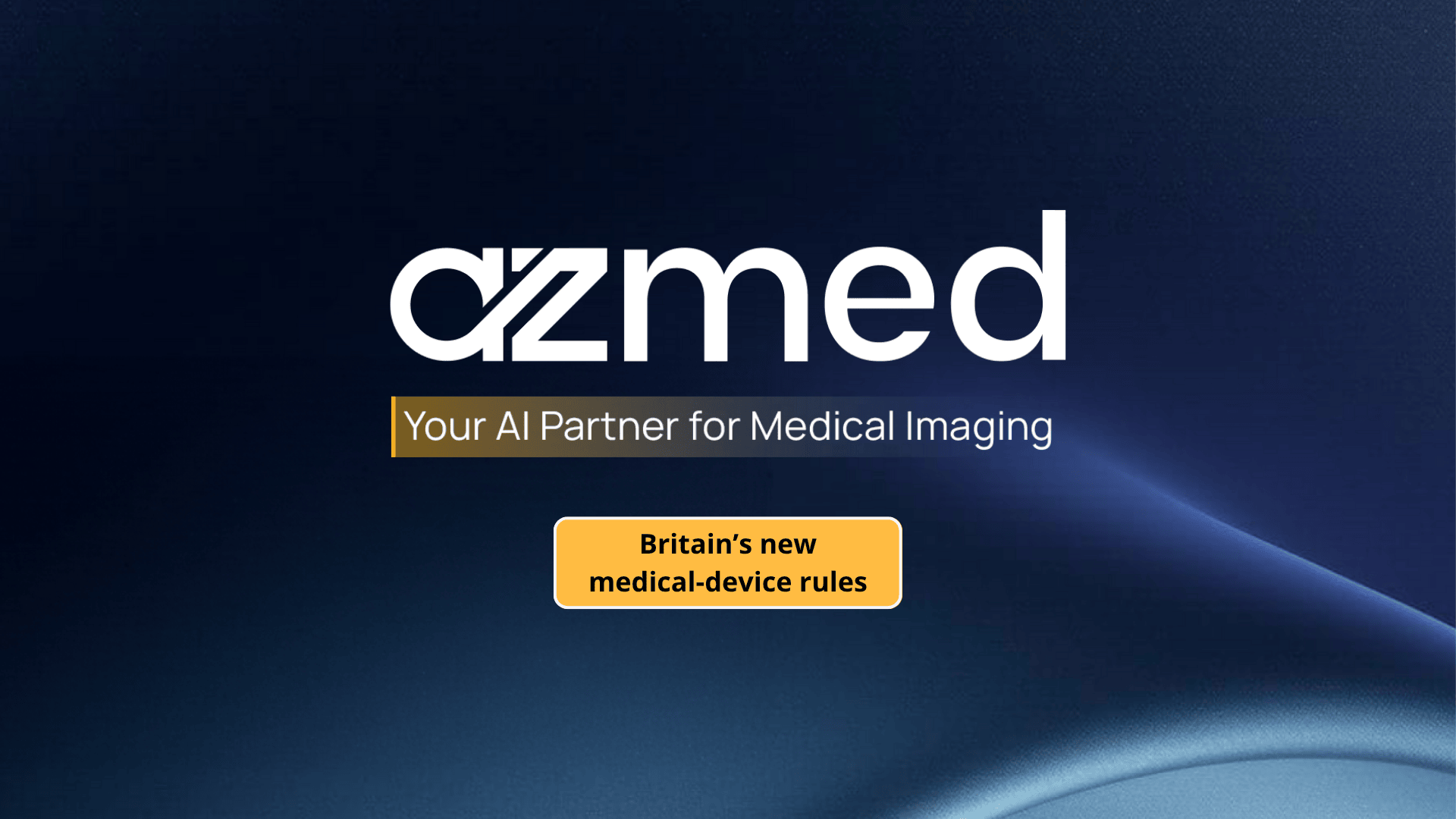Frontline care relies on confidence. Clinicians must be confident in their findings, clinical judgments, and communications. Patients must have faith in the soundness of the plan. However, certainty can be undermined by the volume of imaging, time pressure, and the subtleties of early-stage disease. In radiography, the initial image frequently informs the subsequent clinical decision. The entire pathway can be slowed by an equivocal finding. In that situation, AI X-ray analysis is not a magic trick. It is a suite of tools that can facilitate timely, reliable decision-making so the team can proceed with greater clarity and less uncertainty.
Here, confidence does not equate to unquestioning trust in a model. It refers to well-calibrated decisions in which the degree of certainty is explicitly communicated. It is created when the workflow enables concurrent action, when uncertainty is flagged rather than concealed, and when evidence is readily visible. This is where contemporary tools for chest X-ray analysis and fracture X-ray analysis can be useful. The most effective systems prioritize critical cases, highlight subtle radiographic signs, and provide structured context to the report. Clinical authority is not diminished by them. They support it with reproducibility and signal detection.
Crucially, international health organizations are explicit about the balance. “Generative AI technologies have the potential to improve health care but only if those who develop, regulate, and use these technologies identify and fully account for the associated risks,” according to the World Health Organization.¹ The framing is important. When risks and benefits are addressed and governance is incorporated into the design, confidence increases.
The confidence gap at the point of imaging
Diagnostic variability and a heavy workload are two issues that frontline clinicians and imaging teams face together. An occult fracture can be concealed by a radiograph that appears normal. An early pulmonary nodule may be obscured on a low-contrast chest radiograph. Subtle radiographic signs are overlooked when time is critical. Nobody wants to miss a finding in routine practice, but nobody wants to overcall either. Cognitive load and back-and-forth decision making slow care as a result.
In response, health systems have started to formally assess imaging AI. NICE final Early Value Assessment on X-ray analysis indicates a cautious course. According to NICE’s final guidance, clinical evidence suggests that the AI technologies may improve fracture detection on X-rays… without increasing the risk of incorrect diagnoses.” Additionally, it stated: “These AI technologies are safe to use and could spot fractures which humans might miss given the pressure and demands these professional groups work under.”²
That combination speaks directly to confidence: signal improvement without additional harm. Missed injuries decrease and borderline cases proceed more quickly when a second, highly reliable reader assists with the initial review. The use case remains grounded in clinical oversight. NICE highlights that the AI does not operate in a vacuum and that every image is still examined by a qualified clinician.² This maintains trust with the clinician who signs the plan
What "trustworthy AI" in healthcare looks like
AI that can be trusted is not a slogan. It is a set of practices. Simply put, the objective is: “Understanding and managing the risks of AI systems will help to enhance trustworthiness, and in turn, cultivate public trust.” ³ That is the order: confidence follows risk management.
The same concept is embedded in European law by the AI Act. Article 14 mandates that high-risk AI systems, such as clinical image analysis, be designed and developed in a way that “they can be effectively overseen by natural persons during the period in which they are in use.” ⁴ This requirement is mandatory. It implies that the system needs to be engineered so that users can appreciate limitations, detect anomalies, and override algorithmic outputs. In short, the machine is not given the final say.
The groundwork for confidence at the front line was laid by those two statements, one from a standards body and the other from a legally binding regulation. Clinicians can rely on systems without sacrificing their judgment when they are transparent, monitored, and under human oversight. That type of trust is appropriate.
Three easy ways AI boosts confidence
First, by identifying subtle signals, AI reduces diagnostic uncertainty. Classic problem areas include faint pleural lines, hairline rib fractures, small cortical breaks, and barely perceptible lung nodules. These patterns can be consistently identified at scale by algorithms trained on large, labeled datasets. That improves lesion conspicuity so findings are not overlooked, but it does not eliminate the need for clinical context. When utilized as assistive tools in routine practice, this is the fundamental promise of fracture X-ray analysis, pediatric X-ray analysis, and lung nodule X-ray analysis.
Second, AI directs attention to the appropriate case at the appropriate moment. With worklist triage X-ray analysis, examinations most likely to reveal a critical finding are prioritized. The day is rearranged as a result. When pneumothorax X-ray analysis or pleural effusion X-ray analysis indicates an urgent review, clinicians can intervene promptly on cases that cannot wait. In practice, this results in fewer callbacks for the same patient and more definitive plans.
Third, AI uses structure to reduce inter-reader variability. Bounding boxes, heatmaps, and standardized outputs all help to mitigate diagnostic ambiguity. Readers are more likely to trust the overlay and their own eyes when the same inputs produce consistent results over time. The report turns into a structured narrative with conclusions, supporting data, and a roadmap for the future.
Maintaining the ceiling while raising the floor for fracture care
Missed fractures matter. They cause avoidable follow-up visits, prolong pain, and delay treatment. NICE presents the issue in a straightforward manner. According to the article, AI may help “prevent further injury or harm” while patients wait by reducing the number of fractures that are missed at initial presentation, which is a common diagnostic error.² In practice, confidence manifests as fewer near-misses and safer, faster decisions backed by FDA-cleared X-ray analysis when necessary.
The regulatory environment encourages cautious adoption. The Food and Drug Administration in the US has issued clearances for AI that assists with fracture detection on radiographs, including pediatric use. “European MedTech startup AZmed has received 510(k) clearance from the US FDA for its Rayvolve solution that detects fractures on pediatric X-rays,” states a public report.⁵ When clinicians ask what the tool is indicated to do, they need a clear and concise statement.
Confidence increases in two ways for frontline teams that use fracture X-ray analysis. In order for the reader to zoom in and make a decision, the model can first identify instances where a subtle fracture is likely. Second, the negative predictive value is useful when the model is silent. When a radiograph appears normal, it alters the pretest probability and reduces anxiety, but it doesn’t “rule out” on its own. Teams eventually encounter fewer unanticipated follow-up events and preventable delays in orthopedic referral or immobilization. This is how flow is fueled by confidence.
Chest radiography: assurance in thin images
Chest radiographs continue to be the most frequently ordered imaging examination worldwide. They are accessible, rapid, and ubiquitous. However, they are also technically challenging. Small lesions can be obscured by superimposed anatomy. Early pneumothorax can be clinically occult. Pleural effusions are sometimes subtle on projection radiography. Chest X-ray analysis is useful in this area because it flags examinations that should be read immediately and surfaces findings the eye might overlook on a busy day.
Regulators have set boundaries. The intended use of Rayvolve LN is stated in the public 510(k) summary: “Rayvolve LN is a computer-aided detection software device to assist radiologists to identify and mark regions in relation to suspected pulmonary nodules from 6 to 30mm size.”⁶ A clinician can infer the system’s functionality, target size range, and adjunctive status from that one sentence. It is important to note that the software supports; it does not replace.
In addition to nodules, AZmed announced that the FDA granted clearances for AZchest for the detection of lung nodules on chest radiographs and the triage of pneumothorax and pleural effusion. “The clearances include applications intended to assist radiologists in the interpretation and detection of chest X-rays for lung nodules and triage capabilities for pneumothorax and pleural effusion,” the company stated in a clear summary of the scope.⁷ For frontline teams, this means more consistent attention to small pulmonary nodules that might otherwise reside in diagnostic gray zones and earlier prioritization when air or fluid is suspected.
This is where pleural effusion X-ray analysis, pneumothorax X-ray analysis, and lung nodule X-ray analysis operate in concert. There are two design decisions that contribute to confidence. The first is interpretability, which allows the reader to corroborate or refute the evidence presented by overlays that delineate areas of concern for the model. The second is triage logic, which is precisely how people want their day to be organized when every minute matters: studies that are likely to yield critical findings advance in priority.
Safety, supervision, and the human element
Detection is not the only component of confidence. It also concerns the system’s behavior under operational stress. High-risk systems must be “designed and developed in such a way… that they can be effectively overseen by natural persons,” according to the EU AI Act.⁴ This language translates into established imaging safety controls, such as clear instructions for use, controls to pause or terminate the system, training for designated supervisors, and audit logs. By requiring developers and providers to implement user interfaces that assist users in accurately interpreting outputs and overriding them when necessary, it also addresses automation bias, a recognized cognitive risk.⁴
This is reinforced by NIST’s guidance, which outlines practical governance functions (map, measure, manage) that imaging departments and hospitals can adopt. “Understanding and managing the risks of AI systems will help to enhance trustworthiness.”³ These principles are not abstract. They entail bias assessments on incoming data, model output drift monitoring, and explicit escalation pathways when a model appears to be performing suboptimally in routine clinical practice. These are all prerequisites for the kind of trust that clinicians are entitled to.
The system-level perspective is included in WHO’s 2024 guidance on large multimodal models. “We need transparent information and policies to manage the design, development, and use of LMMs to achieve better health outcomes and overcome persisting health inequities,” stated Dr. Jeremy Farrar, Chief Scientist at WHO.¹ To put it another way, governance and equity are requirements. Clinical quality encompasses them.
How artificial intelligence alters the workday
When the workday becomes easier, confidence increases. The queue is the first thing that clinicians notice has changed. Potential critical findings are prioritized by worklist triage X-ray analysis to ensure prompt action. This can result in faster referrals, improved analgesia, and earlier immobilization for trauma radiographs. If a flagged pulmonary nodule on a chest radiograph appears definite, it may result in an earlier call to a colleague in oncology or pulmonology.
The way cases are discussed is the second change. The discussion becomes tangible when a model draws attention to a cortical break or delineates a pleural line. The same evidence is examined by everyone. Since disagreements are now focused on a specific finding rather than a general impression, they become less pronounced.
The audit is the third modification. AI generates an audit trail of predictions that can be compared with final diagnoses. Teams get a new learning loop as a result. This loop gradually reduces the interval between initial review and final decision. Confidence grows as the loop gets tighter.
New committees or intricate dashboards are not necessary for these changes. Their only request is for a workflow in which the user interface explains the “why” behind each flag and assistive AI X-ray analysis is available at the point of care and at the time of decision-making. With that in place, improved workflows lead to increased confidence.
Why quotes are important and what the evidence indicates
Health technology assessment (HTA) is progressing rapidly. Because it balances safety, workload, and equity, the draft NICE guidance on X-ray analysis is significant. AI “may help reduce variation in care across the country” and “reduce the number of fractures that are missed at initial presentation,” according to the agency.² At the point of care, those are the results that count most. The pressures that clinicians describe like maintaining standards, reducing diagnostic misses, and maintaining throughput, also align with them.
Regulatory documents add precision. The Rayvolve LN 510(k) summary outlines the task and its limitations: adults 18 years and older, frontal chest radiographs, nodules measuring 6 to 30 mm, and “adjunctive information only.”⁶ These details prevent scope creep. They also inform clinicians when to rely on the overlay and when to disregard it. Being confident with a tool requires knowing its intended use and limitations.
Finally, the public record of manufacturer communications is important since it is where product claims are scrutinized. The applications are “intended to assist radiologists in the interpretation and detection of chest X-rays for lung nodules and triage capabilities for pneumothorax and pleural effusion,” according to the company’s announcement of AZchest’s FDA clearances for chest X-ray analysis.⁷ For frontline teams, that is the appropriate level of language: identify the tasks, explain the assistive scope, and leave final decision-making with the clinician.
How teams transform AI into confidence through implementation
Let’s start with scope. Select a workflow and an outcome that clinicians are interested in, like reducing missed wrist fractures or promptly triaging suspected pneumothorax. Explain the indications for use in simple terms. To ensure that no one expects perfection, provide examples of true positives, false positives, and false negatives. When expectations are reasonable and aligned with the labeling of FDA-cleared X-ray analysis tools, confidence increases.
Invest in interface-level training. People must understand the meaning of the colors, boxes, and heatmaps and, just as important, what they do not mean. Connect the interface to explicit actions, such as adding views, escalating, consulting a colleague, or continuing as scheduled. Trust increases when a tool consistently results in a decision. This holds true for both chest X-ray analysis in general radiography and pediatric X-ray analysis in trauma clinics.
Include auditing from the beginning. Maintain a straightforward dashboard that records final diagnoses, flagged studies, and any changes in patient management. Enjoy the saves. Talk about the misses. To keep the signal strong, use the data to adjust alerts and set thresholds.
Include governance that is visible to clinicians. Post the data-drift plan. Describe the bias checks. When outputs appear erroneous, publish the escalation path. The team as a whole gains confidence when oversight is evident.
A word about responsibility and language
The phrase "clinician confidence" is used with caution. It does not imply overconfidence. In a steady state of clinical practice, clinicians are able to openly override a tool, explain why it flagged a case, and understand its intended function. WHO makes it clear that “transparent information and policies” for AI used in healthcare must be ensured by governments and developers.¹ The EU AI Act makes it explicit that human oversight is necessary and not optional.⁴ These guidelines formalize what successful teams already do.
The AZmed viewpoint: self-assurance as a design decision
The approach used by AZmed is to provide targeted, regulated assistance at the precise points where radiography is fragile. When cortical lines are thin and exposure is suboptimal, it is easy to miss bone fractures on trauma radiographs. Rayvolve helps clinicians detect these fractures. Under FDA-cleared indications, AZchest aids in the identification of lung nodule and triage for pleural effusion and pneumothorax on chest radiography.
The product philosophy is simple: document performance and limitations, keep the workflow simple, and make the signal visible. For this reason, rather than using catchphrases, we base our message on regulated indications. To put it briefly, clinicians should be met where they are by AI X-ray analysis, not the other way around.
What frontline clinicians consider to be good
Four recurrent effects are reported by frontline clinical teams when AI is applied with governance and respect for clinical judgment. First, because the worklist makes sense, the day begins more calmly. Second, equivocal cases lead to more focused and expedited conversations. Third, because structured outputs flow into the report, documentation becomes clearer. Fourth, because more findings are identified on first pass, fewer follow-up calls are made.
These are modest but useful victories. Only together, they confer a stronger sense of control. And the silent foundation of confidence is control. It means that the team is aware of its current status, its next steps, and how to communicate the plan to patients.
The bottom line
AI should not be marketed as a guarantee. It ought to be delivered as clinical support. Transparent, regulated tools designed for human oversight increase confidence at the frontline. Confidence increases when performance is monitored and communicated. It develops when those who use a model are aware of its strengths and limitations.
That kind of confidence is something we can develop. We now have the policy scaffolding in place. NICE has indicated a methodical, evidence-based approach to fracture detection.² Risk, transparency, and equity have been clearly delineated by NIST and WHO. By design, the EU AI Act necessitates human oversight.⁴ Vendors register specific, publicly available indications for use that maintain clinician authority. ⁵ ⁶ ⁷
References
- World Health Organization. WHO releases AI ethics and governance guidance for large multi-modal models. 18 January 2024. https://www.who.int/news/item/18-01-2024-who-releases-ai-ethics-and-governance-guidance-for-large-multi-modal-models
- National Institute for Health and Care Excellence (NICE). AI technologies recommended for use in detecting fractures (Draft guidance news article). 22 October 2024. https://www.nice.org.uk/news/articles/ai-technologies-recommended-for-use-in-detecting-fractures
- National Institute of Standards and Technology (NIST). Artificial Intelligence Risk Management Framework (AI RMF 1.0). January 2023. https://nvlpubs.nist.gov/nistpubs/ai/nist.ai.100-1.pdf
- European Union. Regulation (EU) 2024/1689 (AI Act), Article 14: Human oversight. Official Journal, 12 July 2024. https://eur-lex.europa.eu/legal-content/EN/TXT/PDF/?uri=OJ%3AL_202401689
- Applied Radiology. AZmed Receives FDA Clearance for AI-Powered Pediatric Fracture Detection Solution. 9 September 2024. https://appliedradiology.com/articles/azmed-receives-fda-clearance-for-ai-powered-pediatric-fracture-detection-solution
- U.S. Food and Drug Administration. Rayvolve LN (K243831) — Indications for Use and 510(k) Summary. 26 March 2025. https://www.accessdata.fda.gov/cdrh_docs/pdf24/K243831.pdf
- AZmed / PR Newswire. AZmed Receives Two New FDA Clearances for Its AI-Powered Chest X-ray Solution (AZchest). 31 March–1 April 2025. https://www.prnewswire.com/news-releases/azmed-receives-two-new-fda-clearances-for-its-ai-powered-chest-x-ray-solution-302414410.html and https://www.azmed.co/news-post/azmed-receives-two-new-fda-clearances-for-its-ai-powered-chest-x-ray-solution



